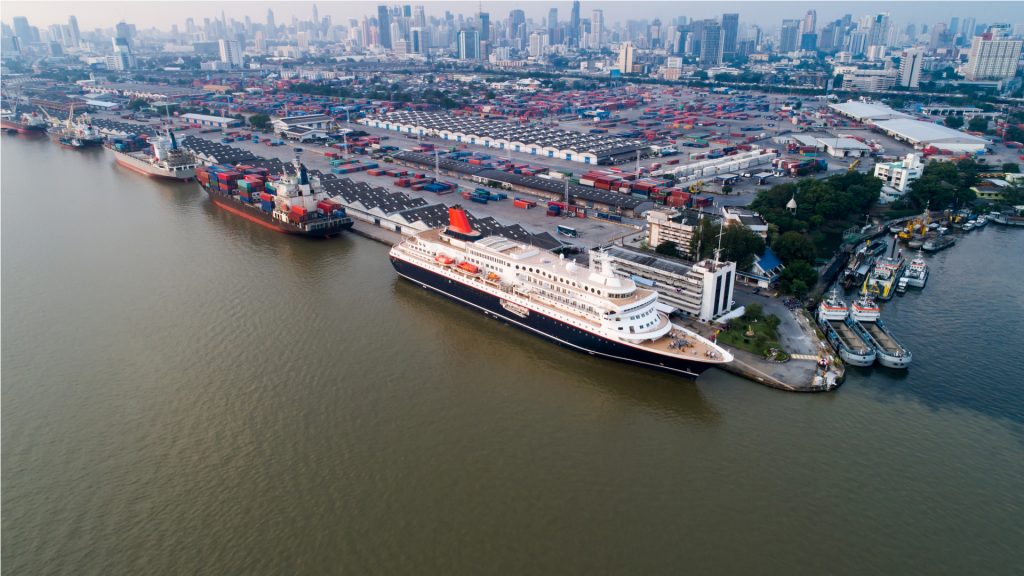Port operators internationally can expect a year of transformation in 2018, according to UK-based Ince & Co, an international commercial law firm.
Shifting economic trends, trade flows, and global demographic patterns, in tandem with changes in port ownership and ongoing investment in modernisation and expansion are all creating the conditions for what could be a defining year for the global ports industry.
Ince & Co, which advises on a range of ports-related issues, including project development, concessions, acquisitions, financing and dispute resolution, points to these factors as creating a unique set of commercial opportunities for port operators as they look to adapt to new operating realities, which will also impact the wider ports supply chain.
Ton van den Bosch, head of Ince & Cos global ports and maritime infrastructure practice, said: Recent years have been marked by changing fortunes across the worlds ports.
From Africa to Asia, Europe to the Americas, no operator can avoid the changing commercial realities of port operations. There is every prospect that 2018 is set to be a transformative year for these terminals and their ongoing development, with real commercial opportunities to be had for those operators who can navigate these waters successfully.
Van den Bosch points to several factors that will combine to set the stage for 2018. For ports in Asia and Africa in particular, chief among these is Chinas Belt and Road Initiative.
The initiative, which has already had a large effect on the shipping industry, particularly on East-West trade routes, has seen around $150bn a year in investment, covering roads, railways, pipelines and more. It is estimated that China has invested $20bn in ports and terminals alone in the past 12 months.
Van den Bosch commented: If 2017 was the year when the West woke up to the Belt and Road, 2018 will be the year that its impact will begin to become apparent. Indeed, we can already see the macroeconomic effects of Belt and Road beginning to manifest.
One of these is in consolidation of ownership. By 2020, the combined entity of Cosco and China Shipping is set to become the biggest container terminal operator by capacity. This will see them climb from fourth and eighth in the global rankings; a dramatic rebalancing of the operation of global trade.”
He continued: Smaller port operators may well be wondering what their place will be in this sector in the near future, given this pace of change. The most important thing to understand is that no-one is immune from these developments, but also that they offer commercial opportunities for operators who can take advantage of them.
The rapid growth, expansion and modernisation of port facilities in emerging and frontier nations is a direct reflection of the opening up of new trade routes and the liberalisation of consumer markets. If small operators can secure funding, they have the potential to compete effectively with newer operations funded by large global players. The most successful operations will be those with a strategy for the long-term and one that is built to reflect wider economic trends.”
One area that Ince & Co sees as being of particular commercial value to operators planning for 2018 and beyond is a shift towards gateway operations, rather than transhipment. The firm points to changing trade flows in Asia and Africa creating captive markets ready to be tapped.
Van den Bosch said: When we look at countries like Congo or East Timor, we clearly see operators scrambling to establish gateway terminals to open up these markets to global trade. This is a pattern that is repeating all over the world: Belt and Road investment improves local infrastructure and transport links, and operators move in to build. Put bluntly, cargo volumes needing to reach localised geographies in these frontier markets have few other choices. Port operators that can lead this trend and get into these markets early will be able to build themselves as a lasting and indispensable presence to these nations.”
Additionally, whilst the firm sees these shifting global trends as the most significant opportunity for operators, it also underlined the acute risks facing the port industry in 2018.
In emerging markets, financing will remain a challenge, as well as ongoing issues in terms of compliance, anti-bribery and corruption. But, fundamentally, we believe that the coming year will see an even greater pace and scale of investment for our global ports industry, creating opportunities across the supply chain. 2018 will also see continued R&D in the use of emerging technologies in the ports world, including automation and blockchain. Although we dont necessarily anticipate any of these breaking through as a true game-changer in the next 12 months, we do expect a clearer picture to emerge of the likely commercial applications and benefits of each of these technologies within port operations.”

